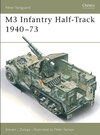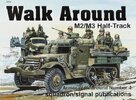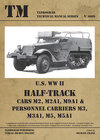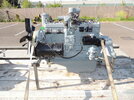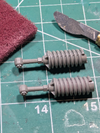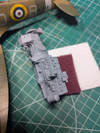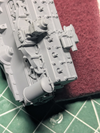Edbert
Well-Known Member
- Joined
- May 16, 2024
- Messages
- 1,683
I know damn well I will not resist breaking bags on this kit, so might as well open up the thread. The pre-order arrived today, it was a pretty large box considering that no parts are very large, as in those 5th gen 1/48 aircraft that need the floor-space of a 20+ inch box. But it was heavy and deep, with 18 sprues an whatever else.
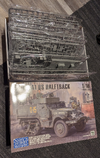
I started reading the manual which is laminated paper in full color and about 50 pages with a fold-out at the end. After a very personal greeting letter at the beginning (from Andy duh) it lists an image of the contents and then goes straight in to assembly. I was instantly aware that there are no color call outs. First thought was to panic because I did not buy any walk-arounds or similar literature about 1944-45 M3 halftracks in Western Europe and Italy. But it dawned on me that the color to use is "green".
There were CAD drawings of the drivetrain shown in gray or black, and the green on the seats was lighter than the green on the rest. But, other than those exceptions, she's green!

I started reading the manual which is laminated paper in full color and about 50 pages with a fold-out at the end. After a very personal greeting letter at the beginning (from Andy duh) it lists an image of the contents and then goes straight in to assembly. I was instantly aware that there are no color call outs. First thought was to panic because I did not buy any walk-arounds or similar literature about 1944-45 M3 halftracks in Western Europe and Italy. But it dawned on me that the color to use is "green".
There were CAD drawings of the drivetrain shown in gray or black, and the green on the seats was lighter than the green on the rest. But, other than those exceptions, she's green!
Last edited:

